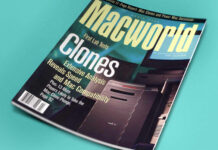
Apple licenses Mac OS to Radius: Today in Apple history
 January 4, 1995: Apple signs a deal with third-party Mac accessory-maker Radius, allowing the company to build Macintosh clones that run on Mac OS.
January 4, 1995: Apple signs a deal with third-party Mac accessory-maker Radius, allowing the company to build Macintosh clones that run on Mac OS.
Radius is the second company to license the Macintosh operating system. (Power Computing did the same thing a month earlier.) However, Radius will become the first licensee to bring a clone to market when its System 100 ships in March 1995.
Radius: A Mac peripheral maker with a pedigree
Radius enjoyed a long history with Apple. Former members of the Macintosh team founded the company in 1986, two years after the first Mac shipped. Founders included Burrell Smith, Andy Hertzfeld, Mike Boich and others — many of whom were immortalized as Apple team members who signed the inside case of the original Macintosh.
After the Mac project finished, many of the people who worked to bring the computer to fruition (including, as it turned out, Steve Jobs) left Apple to start new ventures.
Radius was one such company. It first made waves by shipping the Radius Full Page Display, a second screen for personal computers (initially the Macintosh II). Radius also pioneered the concept of letting users drag windows between multiple displays. The company later developed the Radius Accelerator, which greatly increased a Mac’s speed by adding a Motorola 68020 processor.
Apple licenses Mac OS to Radius
Radius struggled in the early 1990s, but appeared to score an astonishing coup after Apple management decided to license the Macintosh operating system in the middle of the decade. Many inside Apple pushed for this type of deal for years, but they met with fierce resistance from people like Mac manager Jean-Louis Gassée.
By the mid-1990s, Gassée was long gone from Apple. Cupertino’s execs moved to license the Macintosh operating system in a bid to recover profitability. In an ideal world, the strategy would help Apple catch up with rival Microsoft, which had surged ahead by licensing its own OS to other manufacturers.
Clone Macs: A disappointing deal

Photo: Digibarn CC
The deal Apple brokered was horrendous for Cupertino, however. In fact, Radius and Power Computing only had to pay Apple $50 per machine they made. Had the plan to increase market share actually worked, then-Apple CEO Michael Spindler thought a million clone Macs would be sold by the end of 1995.
The plan failed, though. Apple CFO Fred Anderson later worked out that the strategy actually cost Apple money. Why? People chose clone Macs instead of buying the more expensive (and, for Apple, more lucrative) official ones.
After licensing the Mac OS from Apple, Radius made two contributions to the Macintosh clone family. The System 100, which came in 80 MHz and 110 MHz variations, boasted a modified Power Mac 8100 motherboard in a ridiculously tough tower enclosure. The other machine was a lower-end 110 MHz System 81/110, which didn’t come with a Radius video card.
Radius gets out of Mac clone game quickly
In the end, Radius fared badly on the clone Macintosh front. It abandoned the project not long after starting. These Radius clone Macs — while not especially collectible — remain fun curiosities for those interested in Mac history.
Radius unloaded its Mac OS license to Taiwanese scanner manufacturer Umax Data Systems in May 1996. The following year, after Apple co-founder Steve Jobs returned and began to steer the company in the right direction, he pulled the plug on the clone Macs altogether.
Do you remember clone Macintoshes? Is it a strategy you’d like to see repeated today? Or is it best left to the “bad old days” of the mid-1990s?



